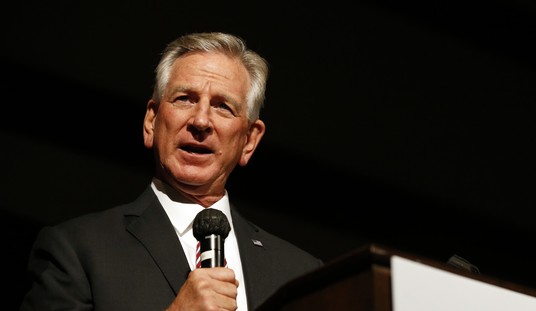Found via Jeff Brokaw, Terry Teachout asks in his Wall Street Journal column, “Can Jazz Be Saved?”
The prognosis looks grim:
In 1987, Congress passed a joint resolution declaring jazz to be “a rare and valuable national treasure.” Nowadays the music of Louis Armstrong, Duke Ellington, Charlie Parker and Miles Davis is taught in public schools, heard on TV commercials and performed at prestigious venues such as New York’s Lincoln Center, which even runs its own nightclub, Dizzy’s Club Coca-Cola.
Here’s the catch: Nobody’s listening.
No, it’s not quite that bad—but it’s no longer possible for head-in-the-sand types to pretend that the great American art form is economically healthy or that its future looks anything other than bleak.
Last year, I linked to a David Brooks column about the efforts of Bruce Springsteen sideman and supporting Sopranos cast member “Miami” Steve Van Zandt to add rock and roll to high school curriculums. Brooks wrote:
It seems that whatever story I cover, people are anxious about fragmentation and longing for cohesion. This is the driving fear behind the inequality and immigration debates, behind worries of polarization and behind the entire Obama candidacy.
If you go to marketing conferences, you realize we really are in the era of the long tail. In any given industry, companies are dividing the marketplace into narrower and more segmented lifestyle niches.
Van Zandt has a way to counter all this, at least where music is concerned. He’s drawn up a high school music curriculum that tells American history through music. It would introduce students to Muddy Waters, the Mississippi Sheiks, Bob Dylan and the Allman Brothers. [Gee, not Springsteen, as well?–Ed] He’s trying to use music to motivate and engage students, but most of all, he is trying to establish a canon, a common tradition that reminds students that they are inheritors of a long conversation.
And Van Zandt is doing something that is going to be increasingly necessary for foundations and civic groups. We live in an age in which the technological and commercial momentum drives fragmentation. It’s going to be necessary to set up countervailing forces — institutions that span social, class and ethnic lines.
Music used to do this. Not so much anymore.
As I noted in response:
Education used to do this as well. Not so much, anymore.
But back to the main point of Brooks and Miami Steve. Jazz was essentially frozen in amber as a creative force once Lincoln Center hired Wynton Marsalis to be its “Musical Director of Jazz.” Miami Steve wants to do the same thing to rock. And it’s not like education isn’t already dominated by Present Tense Culture.
(Or, for another way to look at Brooks’ column: this just into the New York Times: Pop culture is fractured and demassified, something that Alvin Toffler predicted 28 years ago.)
But then, jazz is capable of imploding itself with little or no outside help, as I wrote a few years ago:
In the 1940s, Miles, Dizzy, Bird and Charlie Christian used their Manhattan nightclubs as a laboratory to invent bebop, eventually killing the swing orchestras dead in their tracks. While bebop and its offshoots produced some brilliant music, by and large, it wasn’t a genre you could easily dance to. Which is why, as Mark Gauvreau Judge wrote in 2000’s If It Ain’t Got That Swing, the teenagers of the 1950s found an alternative: rock and roll. A few years later, Berry Gordy’s Motown borrowed from the assembly lines–not Detroit’s, but Hollywood’s–and adapted Tinseltown’s studio system approach to music, and produced hit after hit.
As Teachout concludes:
Even if I could, I wouldn’t want to undo the transformation of jazz into a sophisticated art music. But there’s no sense in pretending that it didn’t happen, or that contemporary jazz is capable of appealing to the same kind of mass audience that thrilled to the big bands of the swing era. And it is precisely because jazz is now widely viewed as a high-culture art form that its makers must start to grapple with the same problems of presentation, marketing and audience development as do symphony orchestras, drama companies and art museums—a task that will be made all the more daunting by the fact that jazz is made for the most part by individuals, not established institutions with deep pockets.
No, I don’t know how to get young people to start listening to jazz again. But I do know this: Any symphony orchestra that thinks it can appeal to under-30 listeners by suggesting that they should like Schubert and Stravinsky has already lost the battle. If you’re marketing Schubert and Stravinsky to those listeners, you have no choice but to start from scratch and make the case for the beauty of their music to otherwise intelligent people who simply don’t take it for granted. By the same token, jazz musicians who want to keep their own equally beautiful music alive and well have got to start thinking hard about how to pitch it to young listeners—not next month, not next week, but right now.
Exactly.










Join the conversation as a VIP Member